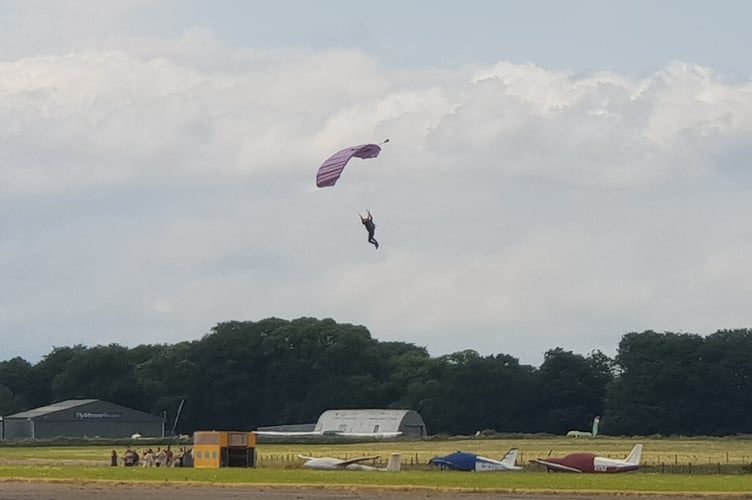A PAIR of two-seater Spitfires flew low over Wellington on Friday evening (August 4) on their way to Dunkeswell Aerodrome for the airfield’s 80th anniversary weekend.
But a Met Office yellow weather warning for strong winds on Saturday (August 5) meant the aerodrome had to take a late decision to cancel the first of the two days of celebrations.
The iconic Spitfires, which passed over Wellington just after 7 pm, were booked to give displays during the weekend and were also offering flights for paying passengers,
Thousands of visitors are due to attend the airfield on the Blackdown Hills between Hemyock and Honiton and those who had paid for Saturday have been told they will be refunded.
The Met Office warning covers the whole of the Westcountry from 8 am on Saturday to 8 pm as Storm Antoni sweeps over the region.
It has forecast winds of up to 65 mph in the worst hit areas, meaning there is the potential for danger to life from flying debris and there could be damage to buildings, such as roof tiles being blown off.

The weather is forecast to ease during Saturday evening and the aerodrome plans to go ahead with Sunday’s (August 6) activities.
As well as flights in the Spitfires, which are operated by spitfires.com, planned activities for the 80th anniversary include a large static display of aircraft display from different eras, and an exhibition of high-octane automotive vehicles with a curated selection of automotive stands featuring supercars, classic cars, vintage motorcycles, and others.
Today, Dunkeswell Aerodrome is a busy civilian airfield with a mix of light aircraft, microlights, and parachuting activities, with a nearby gliding club.
But when it was being opened as RAF Dunkeswell in 1943 it was planned to be first a RAF Fighter Command base and then a RAF Coastal Command airfield.

However, it was transferred to the American forces and first used as a base of operations for the United States Army Air Force’s Anti-submarine Command (USAAF), 479th Anti-submarine Group, to fly missions over the Bay of Biscay using B-24 Liberator bombers.
The airfield also houses Dunkeswell Airfield Heritage Centre, which has a substantial photographic collection of more than 400 images depicting day to day life on the base during the Second World War, as well as many wartime artefacts.
The heritage centre tells the story of the aerodrome from its construction through its use by the USAAF, US Navy, and RAF Coastal Command to the eventual break-up of aircraft and its closure as a military base.
Dunkeswell played a major role in defending Britain’s supply lines in the Battle of the Atlantic and was a major deterrent with its search and destroy missions.
More information about Dunkeswell Aerodrome’s 80th anniversary weekend can be found on its website www.dunkeswell.co.uk/dunkeswell80.



